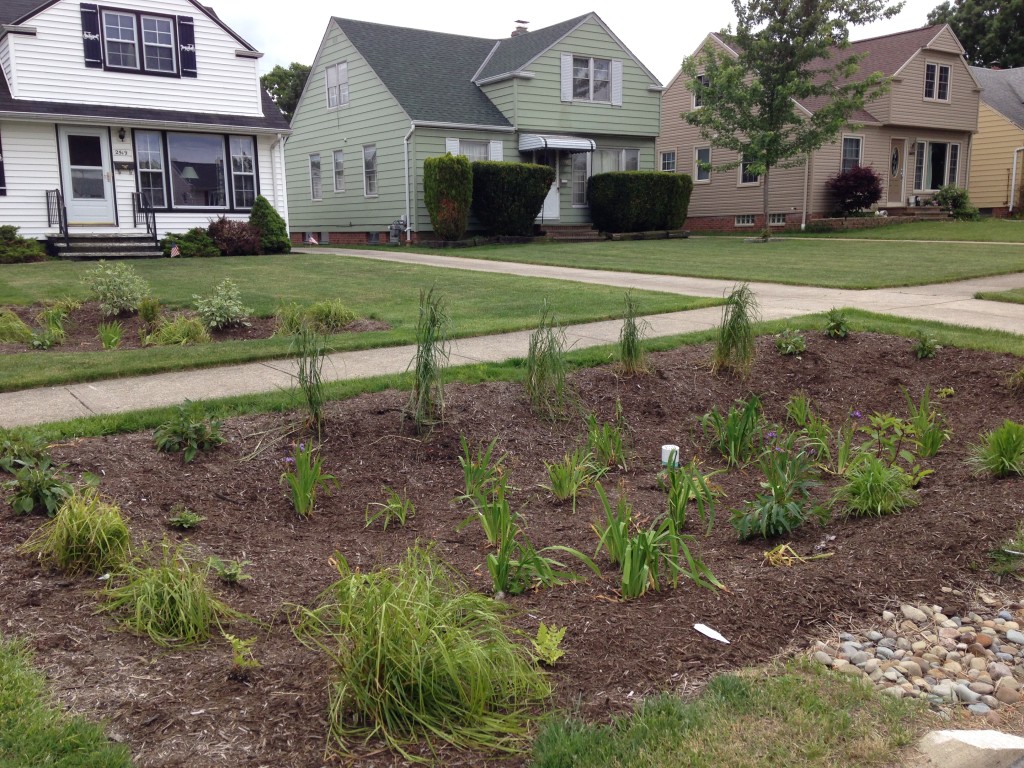Retrofitting stormwater retention on headwater streets: hydrologic effects of catchment-scale green infrastructure
At the Geological Society of America meeting, Anne will be giving an invited talk in (T106) From Green Roofs and Gutters to Urban Streams: Advancing Urban Watershed Hydrology through Innovative Field and Modeling Approaches. On Monday, November 2nd, at 1:35 pm in BCC room 342, Anne will be talking about:
Retrofitting stormwater retention on headwater streets: hydrologic effects of catchment-scale green infrastructure
Anne J. Jefferson1*, Kimberly M. Jarden1, and Jennifer M. Grieser2
1. Department of Geology, Kent State University, 221 McGilvrey Hall, Kent, OH 44242 kimberly.jarden@gmail.com; ajeffer9@kent.edu
2. Cleveland Metroparks, 2277 W Ridgewood Dr, Parma, OH 44134 jmg2@clevelandmetroparks.com
*corresponding author
Abstract
The detrimental effects of urban stormwater can be lessened by disconnecting impervious surfaces and redirecting runoff to stormwater control measures, but retrofitting stormwater ponds into fully-developed urban landscapes is challenging. Decentralized green infrastructure, such as rain barrels, rain gardens, and street-connected bioretention cells, may be a more feasible and attractive approach, but the catchment-scale effectiveness of such retrofits is poorly understood. In a residential neighborhood in suburban Cleveland, Ohio, a before-after-control-impact design, in which streets served as subcatchments, was used to quantify hydrologic effectiveness of street-scale investments in green infrastructure. On a residential treatment street, voluntary participation resulted in 13.5% of parcels having green infrastructure installed over a two year period. Storm sewer discharge was measured pre– and post- green infrastructure implementation and peak discharge, total runoff volume, and hydrograph lags were analyzed. Green infrastructure installation succeeded in reducing peak discharge by up to 33% and total storm runoff by up to 40%. Lag times increased following the first year’s installation of green infrastructure, in which street side bioretention cells were built with underdrains. In the second year, bioretention cells were built without underdrains and lag times did not change further. We conclude that voluntary green infrastructure retrofits that include treatment of street runoff can be effective for substantially reducing stormwater, but that small differences in design and construction can be important for determining the level of the benefit.

